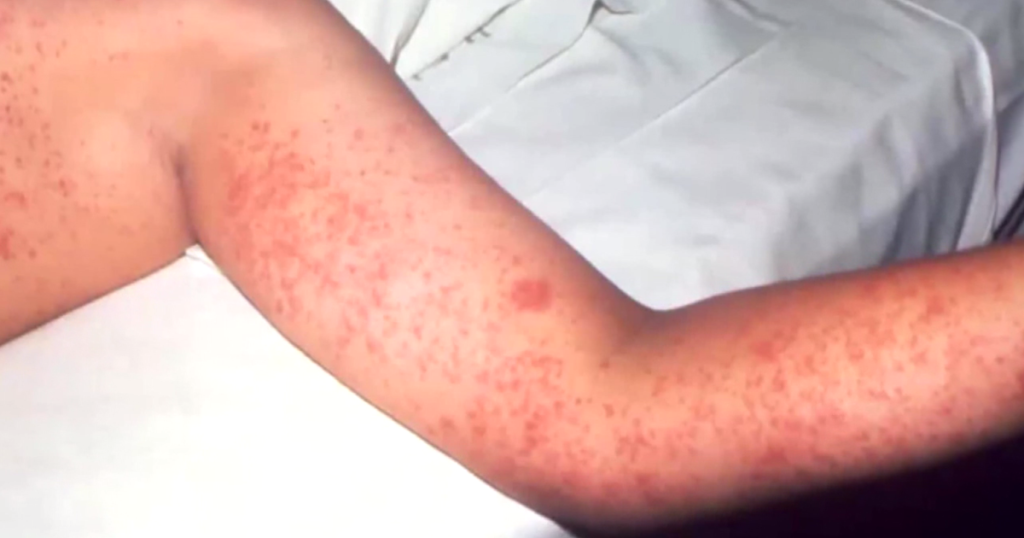A notable surge in measles cases has been reported in the U.S., surpassing previous records set during 2019’s outbreak. The latest figures from the Centers for Disease Control and Prevention (CDC) indicate that the number of reported cases has reached 111 for the week ending March 30. This troubling trend follows reports of an outbreak predominantly affecting Texas and its neighboring states, prompting health officials to closely monitor the situation.
| Article Subheadings |
|---|
| 1) Rise in Measles Cases This Year |
| 2) Details of the Ongoing Outbreak |
| 3) Official Responses and Health Recommendations |
| 4) Comparison with Other Regions |
| 5) Future Implications for Public Health |
Rise in Measles Cases This Year
Recent statistics reveal alarming trends in measles infections across the United States. The CDC reported that the week ending March 30 marked a significant uptick, with 111 cases recorded during this time frame. This figure eclipses the 102 cases documented during the comparable week in 2019, which was notable for experiencing one of the worst outbreaks in decades. By the conclusion of 2019, the total number of measles cases had reached alarming heights, being the highest since the virus was declared eliminated in the country back in 2000.
Details of the Ongoing Outbreak
A significant cluster of measles cases has emerged primarily in Texas and nearby states. The outbreak has reportedly resulted in at least 750 cases this year, making it one of the most extensive outbreaks since the virus was deemed eliminated. Additionally, cases from Oklahoma and other neighboring states have been interconnected with this larger outbreak. The situation continues to evolve, with officials observing 11 local outbreaks across the country, an increase from 10 the previous week.
Official Responses and Health Recommendations
Authorities remain vigilant, examining the ongoing trends with careful scrutiny. While there appears to be a slight decline in new cases in Texas, officials warn that this observation may not signify the end of the outbreak.
“We look at the trends over time… New cases sometimes get reported to public health up to a week after someone was tested,”
said a spokesperson from the Texas Department of State Health Services. They emphasized the importance of observing several weeks of declining case numbers before drawing conclusions about the outbreak’s status. Health officials also remain cautious about the possible ramifications of travel during the recent Easter holiday, which could potentially contribute to a new influx of cases.
Comparison with Other Regions
Comparative data highlights that this year’s measles tally in the U.S. may be understated. Reports indicate that Canada has confirmed over 1,000 cases this year, also stemming from recent outbreaks. Furthermore, hospitalization rates differ significantly between the two countries; 7% of measles cases in Canada have necessitated hospitalization, whereas this figure stands at 13% in the U.S. Tragically, the U.S. has reported three fatalities due to measles this year, a stark contrast to Canada, where no deaths have been recorded thus far.
Future Implications for Public Health
The current measles outbreak poses serious challenges for public health systems, heightening fears about potential larger epidemics if immunization rates do not improve. The rapid increase in reported cases underscores the critical need for effective vaccination programs and public health campaigns. This year’s unprecedented severity hints at an increase in mild, undiagnosed cases that may perpetuate the spread of the virus. Health experts underscore the importance of community awareness and cooperation with vaccination efforts to mitigate this concerning trend.
| No. | Key Points |
|---|---|
| 1 | Weekly measles cases in the U.S. have reached a new high of 111. |
| 2 | The outbreak heavily impacts Texas and nearby states, with at least 750 linked cases. |
| 3 | Health officials are cautious and monitoring for trends, urging vigilance in reporting and vaccination. |
| 4 | Compared to Canada, the U.S. has higher hospitalization rates and recorded fatalities this year. |
| 5 | The severity of this outbreak underscores the need for improved vaccination strategies. |
Summary
The recent spike in measles cases calls for immediate attention and action from health authorities. With the U.S. witnessing the highest number of cases since the elimination of the virus was declared, the implications for public health are profound. Continued vigilance, robust vaccination programs, and public awareness initiatives are critical to curb the ongoing outbreaks and protect vulnerable populations.
Frequently Asked Questions
Question: What factors contributed to the rise in measles cases this year?
Several factors, including lower vaccination rates and significant outbreaks in areas like Texas, have contributed to the rise in reported measles cases this year. Instances of unreported infections may also play a role.
Question: How can individuals protect themselves against measles?
The most effective way to protect against measles is through vaccination. The measles, mumps, and rubella (MMR) vaccine is recommended for children and at-risk populations to prevent the disease.
Question: What should be done if someone suspects they have measles?
Individuals who suspect they have measles should contact a healthcare provider immediately. It’s crucial to inform the healthcare facility beforehand to prevent further exposure to others.


